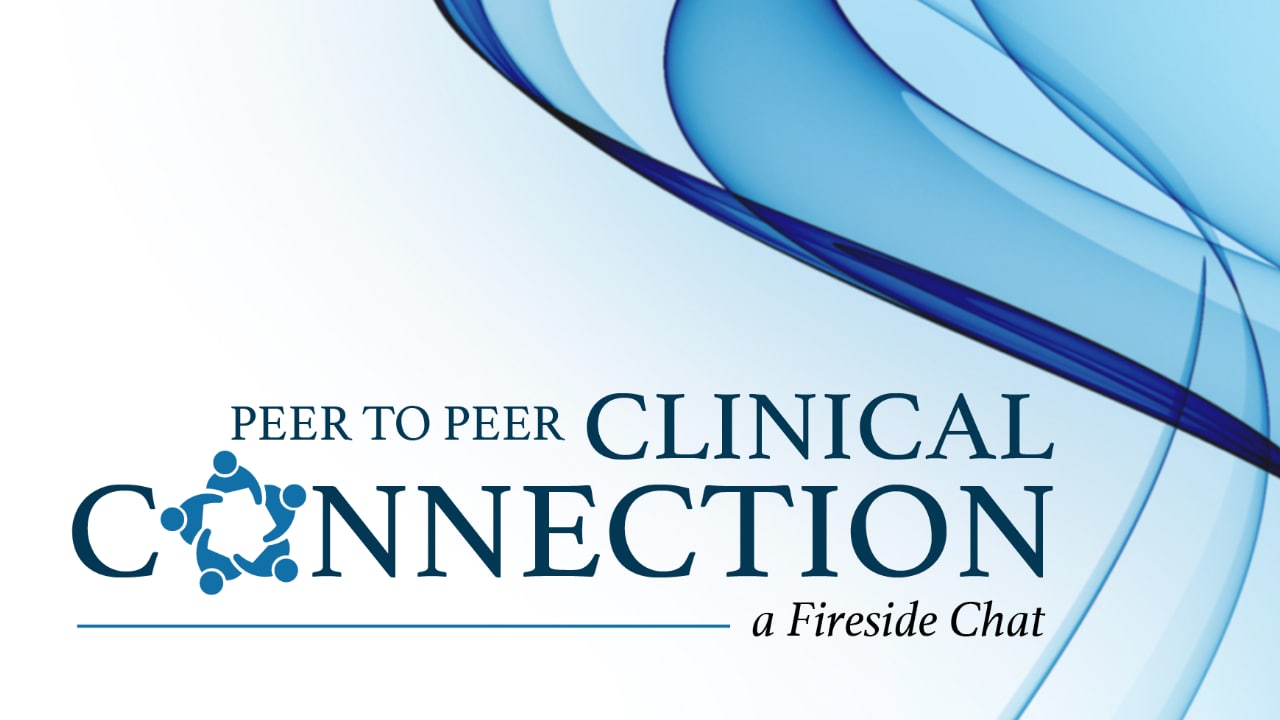Professor Peter A. Lio reviews atopic dermatitis topical therapies for Medscape.
Dr Peter Lio, it is great to have the opportunity to discuss with you about the topical treatments for adults with atopic dermatitis. What are the typical atopic dermatitis signs and symptoms that can help guide treatment decisions?
That is a hard question for a disease that affects up to 10% of adults and maybe as many as 20% of children with a complex etiopathogenesis.[1,2] I would say that the typical scenario includes a patient presenting with mild or moderate disease characterized by itchy patches in the head, neck, and/or flexures. I have some patients who have not had a normal night's sleep in a decade, so the burden of atopic dermatitis can be huge. The diagnosis is made on the basis of the presence of one or more symptoms, including pruritus, erythema, scaling, xerosis, edema, excoriations, oozing, and crusting or lichenification, and exclusion of other possible diagnoses. This can be very challenging, however, because allergic contact dermatitis and other conditions can mimic atopic dermatitis.[3,4] For example, I have had patients referred to me who actually had cutaneous T-cell lymphoma, scabies infestation, zinc deficiency, and secondary infection associated with herpes virus or Staphylococcus. The first step once the diagnosis is confirmed is to get a sense of the type of atopic dermatitis based on the history of when it started, when it got worse, the extent and distribution of the lesions, triggering factors and which medicines and approaches have been attempted.[2,3] It is truly a journey that can have many twists and turns, especially for patients with more severe disease.
The availability of new topical therapies in the past decade is remarkable. What is the first line of topical treatment in adults with atopic dermatitis?
I would highlight the importance of patient education: Our goal is to get the disease under good control and keep it there, but we cannot cure it. It is crucial to communicate that. Patients should be able to avoid irritants and to support their skin using a good moisturizer. I see great results with lifestyle changes and nonprescription therapies.[5] There is also good evidence that a detailed written treatment plan improves outcomes, and I consider this the single most important intervention. The next step up the therapeutic ladder is what is referred to as reactive therapy, which generally consists of lower- to medium-potency topical corticosteroids (TCS) in patients reporting occasional flare-ups despite the initial interventions. TCS are very safe when used correctly, and they are cheap and reliable.[2,3] Although they are fairly safe, I think it's important to have relatively close follow up and be cautious about their overuse. Often, you can achieve disease control with TCS alone, but three scenarios might unfold: (1) failure to get the disease under control, (2) failure to keep it clear safely, or (3) the patient cannot adhere to treatment even though it is working. The most common scenario is the second one when patients use, for example, triamcinolone almost every day for 2 months or after their disease gets better and they stop TCS, it comes back with a vengeance. In all these three scenarios, the next step is a proactive approach, which typically means use of a higher-potency steroid to improve symptoms along with a maintenance treatment, ideally with a nonsteroidal medicine, though low potency steroids can also be used. So, you could use a nonsteroidal agent such as a topical calcineurin inhibitor (TCI) or a phosphodiesterase 4 (PDE-4) inhibitor like crisaborole daily on the remaining areas and trouble spots to prevent flare-ups. Although not explicitly approved by the US Food and Drug Administration (FDA) for use in this manner, there is a robust literature on this approach, and arguably this falls very much in line with the "letter of the law" in terms of approved use.
Should primary care professionals prescribe a topical PDE-4 inhibitor and topical Janus kinase (JAK) inhibitor, or is this an indication to refer the patient to a dermatologist?
I'm wise enough to say that there is no right answer to that question. There is a range of comfort in primary care, and it is perfectly fine to refer a patient with the tiniest rash to a dermatologist, especially if you consider the difficulty in establishing the diagnosis at times — there is no shame in that! Some primary care clinicians are extremely well versed in skin disease and tend to refer out more as a last resort. Ruxolitinib, a topical JAK inhibitor, was approved for short-term and noncontinuous treatment of mild to moderate atopic dermatitis. It is well tolerated, but patients should have good counseling, because black-box warnings include infections, cancer, cardiovascular events, and thrombosis.[6] The most common adverse event related to topical treatment is skin atrophy or thinning and stretch marks associated with TCS, but there is also a lot of debate about topical steroid withdrawal syndrome, although this remains somewhat controversial.[7] TCI side effects are primarily skin warmth and burning, even though the FDA issued a black-box warning regarding the theoretical risk for cancer in 2006[8]; this also requires good counseling to help allay concerns.
What is the evidence for alternative medicines in atopic dermatitis?
As we advance our knowledge about the etiopathogenesis of atopic dermatitis, many alternative treatments have been tested. I have devoted a big part of my career to this field of study. These approaches can be valuable adjunct therapies to more conventional, guideline-based approaches. Stress management techniques seem to be beneficial, and that makes sense considering the effect of stress and poor sleep on the microbiome and on the skin barrier. Habit reversal therapy (HRT) can help patients avoid scratching by substituting it with gentle tapping or playing with beads, for example.[10] It's quite good and simple and very safe. You can find some great HRT resources online. Considering topical treatments, I'm a big fan of sunflower oil, which can actually induce the endogenous production of ceramides and also has an anti-inflammatory effect, probably through the NF-kB pathway.[11] Coconut oil[8] has antimicrobial properties against Staphylococcus colonization[12]; it's also a good emollient and very soothing.[13] Topical vitamin B12 has two fairly impressive trials that show that it is a superior vehicle in treating atopic dermatitis. There are also some good studies about hemp seed oil taken orally.[14] In my practice, I have also used acupuncture and acupressure with good results.[15] There is increasing evidence in favor of incorporating these integrative approaches in the treatment of atopic dermatitis.
Do you recommend any scoring tool to evaluate treatment effectiveness?
My concern with some of the scoring tools is their limitation in assessing a chronic condition that might look good one day and very bad the next. Most of these scoring tools are not useful in clinical practice; they are cumbersome and can underestimate the severity of the disease, with possible implications for treatment and treatment coverage by health insurance companies. I find the Atopic Dermatitis Control Tool (ADCT), with six questions that can be applied in 45 seconds to be a great tool that informs treatment decisions.[16] In fact, this is a self-assessment tool, so patients can answer those questions right before their appointment. If the score is 7 or more points or if there is an increase of 5 points or more from a previous assessment, this is an indication of worsening of the disease. To ask a better question: Instead of "How severe are you?" ask, "Have we achieved control of your eczema?" To me, that is really the only question that counts.
Are there any upcoming therapies for atopic dermatitis on the horizon that are expected to change practice in the near future?
It's amazing, the number of new therapies being developed right now targeting inflammation, itch, and the skin barrier. I would highlight OX40 inhibitors acting on the OX40-OX40L pro-inflammatory pathway[17]; topical roflumilast, a PDE-4 inhibitor; and a host of new JAK inhibitors. There is a new powerful anti-itch therapy: nemolizumab, a biologic agent that inhibits IL-31.[18] Skin barrier repair therapies are also evolving fast with lots of new ideas, including moisturizers that contain ceramides or L-arginine. The microbiome is an important area with novel probiotics, prebiotics, synbiotics, and parabiotics.[19,20] I have been involved in trials of a probiotic spray, Nitrosomonas, with promising results. We can expect many new therapies for atopic dermatitis.
This is exciting! Thank you for this comprehensive review.
Thank you.
Editor's Recommendations
Medscape © 2023 WebMD, LLC
Any views expressed above are the author's own and do not necessarily reflect the views of WebMD or Medscape.
Cite this: Topical Treatment for Atopic Dermatitis - Medscape - Nov 16, 2023.














Comments